Needle-weaving hems and needle-weaving bands have a long tradition in Schwalm whitework.
They are available in a wide variety of designs, with narrow or wide pattern segments and in a wide variety of heights. In my documentation Schwalm Needle-Weaving Bands I have already shown 193 (!) different patterns . There are always new variants to discover. Of course, with a little skill, you can also create your own patterns.
The combined needle-weaving patterns, as you can see here in pictures 5 and 6, are also very interesting for me.
I found a very interesting needle-weaving band pattern of this category on one of my handed down collection pieces.
The middle band consists of a two-piece block pattern with spiders, the top and bottom bands are formed by a mirrored A-pattern.
(Information on the individual categories and detailed descriptions of the working methods can be found in Lesson #4 – Needle-Weaving Band Sampler.)
This needle-waeving band appears to contain an error. Although each of the three bands put together is worked in an even rhythm, the pattern segments of the middle part and those of bottom respective top part are of different widths. This results in mismatches in the overall appearance of the pattern.
If you pick out the individual segments – the pattern part that is constantly repeated – you will see that the segments of the upper and lower part each consist of 18 bundles, but those of the middle part only consist of 12 bundles.
Also, I noticed that the middle part was formed with extremely low units. Nowadays the height of a unit is usually set at 4 mm. Such fixed rules did not apply in the past. But I had never encountered such low units as in the middle part of the example shown here.
That encouraged me to try it out and combine it further. I was often surprised at how different the effect of the individual pattern combinations turned out. Eleven examples can be seen in my documentation Schwalm Needle-Weaving Bands. But there are many more.
I quickly embroidered a few samples. First I embroidered the pattern of the middle part with units reduced to 2 mm.
Then I placed an A-pattern, also reduced in unit height, but with only one row of holes between the triangles, next to it. I’m also considering whether to add a peahole or just a Four-Sided stitch to the finished needle-weaving band.
In another attempt, I stretched out the middle pattern a bit and worked a total of 14 bundles per pattern segment. Next to it I have placed a side part over the full unit height of 4 mm, but shortened to a pattern segment of 14 bundles and with two rows of holes; in such a way that the zigzag lines meet the spider parts.
By reducing the top pattern segment to 14 bundles, the base of the triangles extends over 8 bundles. I didn’t really like the combination with the below block of 12 bundles.
So I kept trying.
I will present one of the patterns that emerged in the blog post after next.
Didn’t you feel like playing with different possible combinations to find out new patterns?
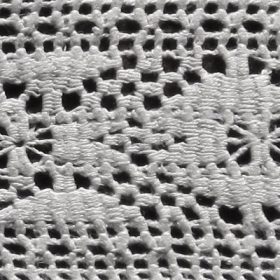
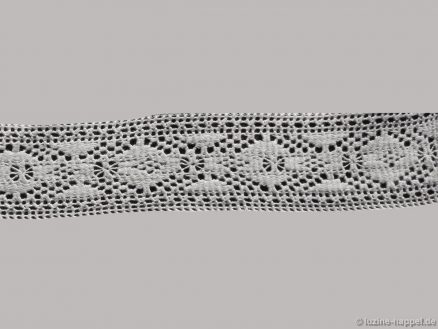
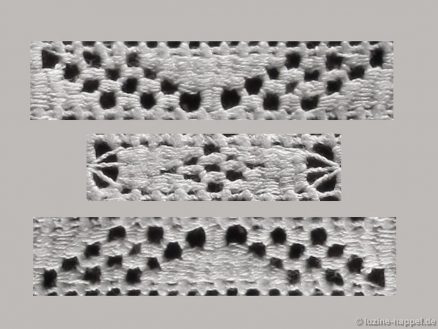
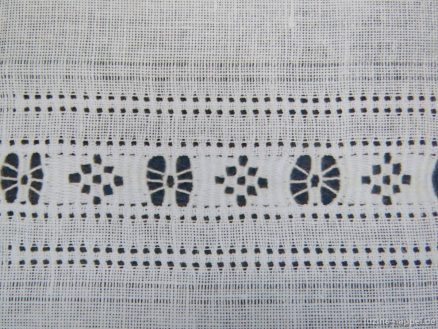
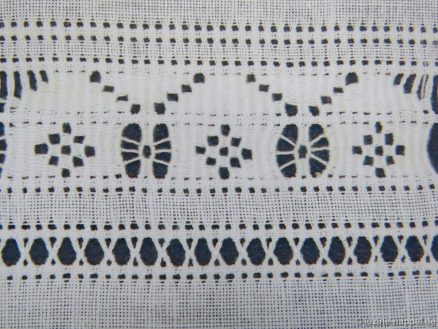
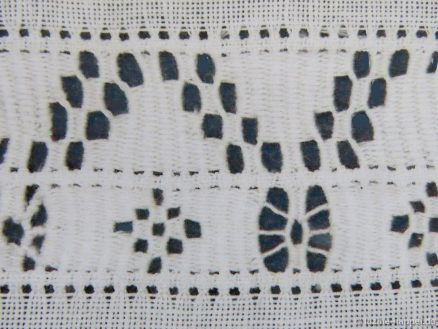


Leave a Reply